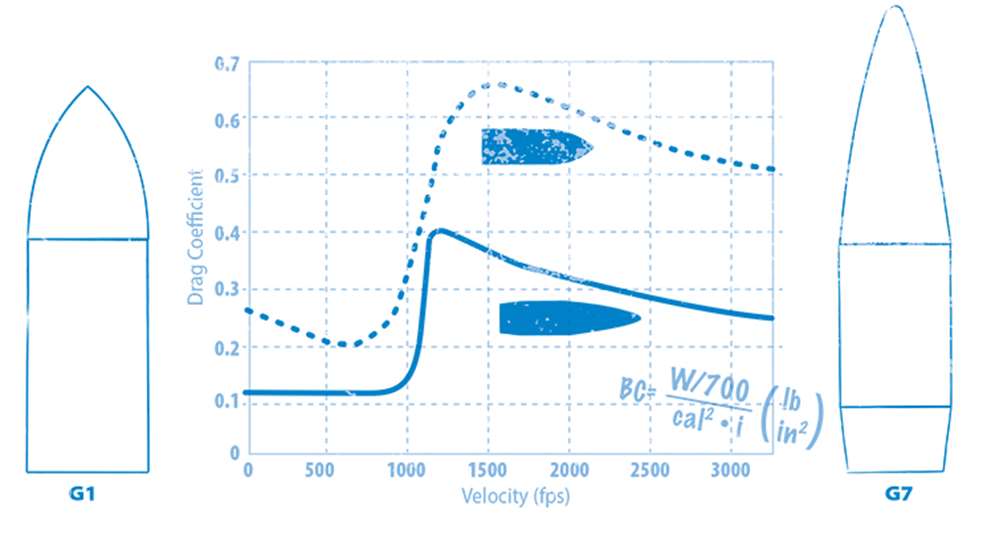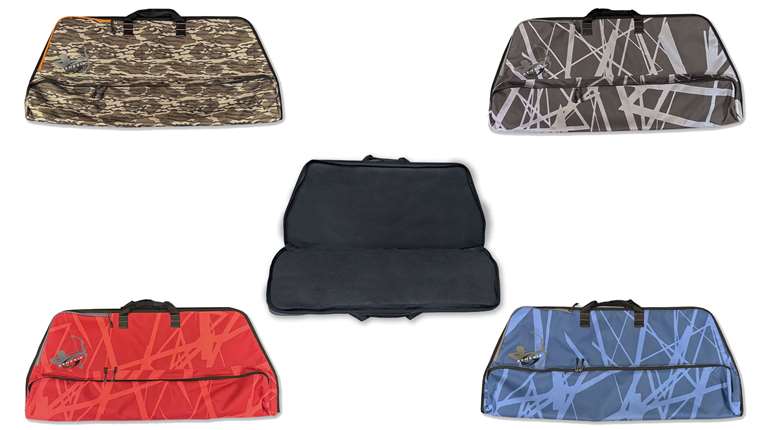
Ballistic coefficients are contrived numbers used to predict the flight path of bullets. These seemingly magical, but often misunderstood, numbers represent the anticipated ability of bullets to maintain velocity or penetrate air. By inserting a bullet’s ballistic coefficient (BC) into a complicated formula, hunters and shooters (usually with the help of software) can create a theoretical representation of a bullet’s trajectory and wind drift. This prediction is hypothetical because it’s based on a comparison of the real bullet to a standard or imagined bullet.
The imaginary bullet used has long been the G1 standard projectile, which is shaped like a rifle bullet from the early 1900s. The G1 projectile, with its flat base and rounded nose, does not realistically represent our modern, highly aerodynamic rifle bullets. To get a better prediction of how these bullets fly, ballisticians often use a different standard projectile known as the G7, which has a boattail base and an elongated nose. You may see either the G1, G7 or both BC values listed with a bullet or on ballistic calculators. A modern bullet’s G7 BC will be different than its G1 BC because the calculation method is different—G1 and G7 BCs are not interchangeable.
How closely your bullet compares to either standard projectile determines how accurately its flight path can be predicted. However, that prediction can hardly be exact because it’s only estimation; as a bullet slows, its BC changes due to change in drag. The BC value listed for a bullet is most accurate only at a specific velocity, and bullet makers don’t always provide that velocity.
There’s a whole lot more to predicting bullet flight—very dry stuff that fills books (a good one is Applied Ballistics for Long Range Shooting by ballistician Bryan Litz, now in its third edition and available here). The important question for hunters is: Are G1 and G7 BC predictions accurate enough to allow for vital-zone hits at distance? Well, it depends on target size and range.
This might be best illustrated by comparing the trajectories of a modern hunting bullet predicted by using its G1 and G7 BCs. At 300 yards the difference between the predicted drops for a 145-grain, 7mm Barnes LRX bullet, with a muzzle velocity of 2790 fps, is less than an inch. This is of no consequence. But at 500 yards, the difference is more than half a foot. That matters!
A newer and more accurate method of determining bullet flight is through use of the bullet’s drag coefficient, which is a primary factor in Hornady’s new 4DOF ballistic calculator (available free at hornady.com). By using Doppler radar to track each bullet in the 4DOF Bullet Library—currently there are more than 60, with additions to come—Hornady is able to determine the actual drag acting on the projectile throughout flight. Ballistics based on drag coefficient are not predictions; they’re true representations of a bullet’s flight. Drop and drift are not hypothetically predicted—they’re chronicled by radar.
Here’s another way of looking at it. Predictions based on BC provide snapshots of the bullet’s probable performance at various points downrange. With a radar-confirmed drag coefficient, you essentially get a video of the bullet’s flight, telling you exactly where the bullet is at any distance and how long it took to get there.
So, as a big-game hunter should you use a G1 BC, G7 BC or drag coefficient to determine the flight of your bullet? Obviously, the better the system used, the better hit you’ll be capable of making. However, out to 300 yards a G1 BC is totally sufficient. If you’re shooting out to 600 yards, a G7 BC will work very well. Beyond that distance, use the drag-coefficient method—but not before you’ve proven your skills and data on the practice range.




































